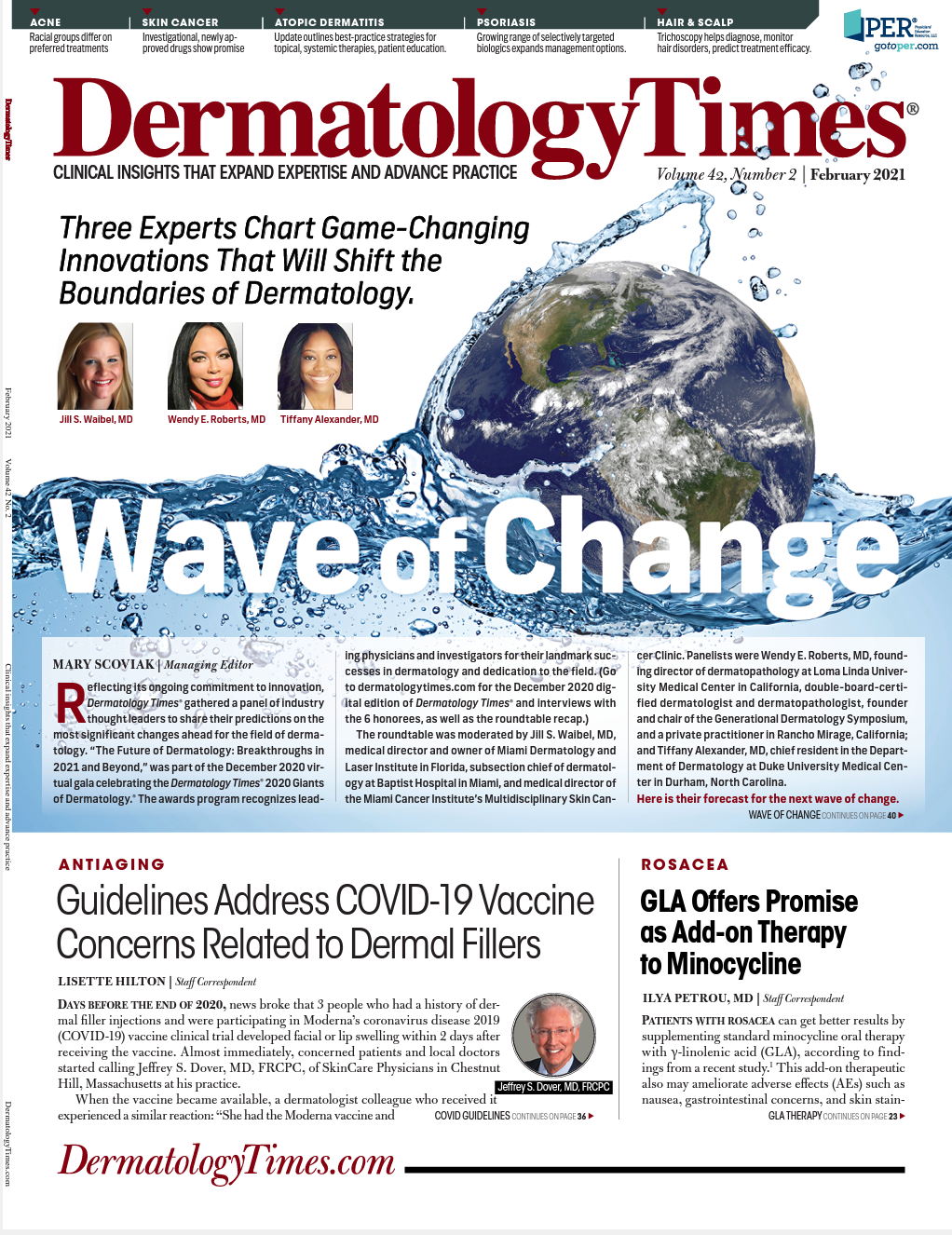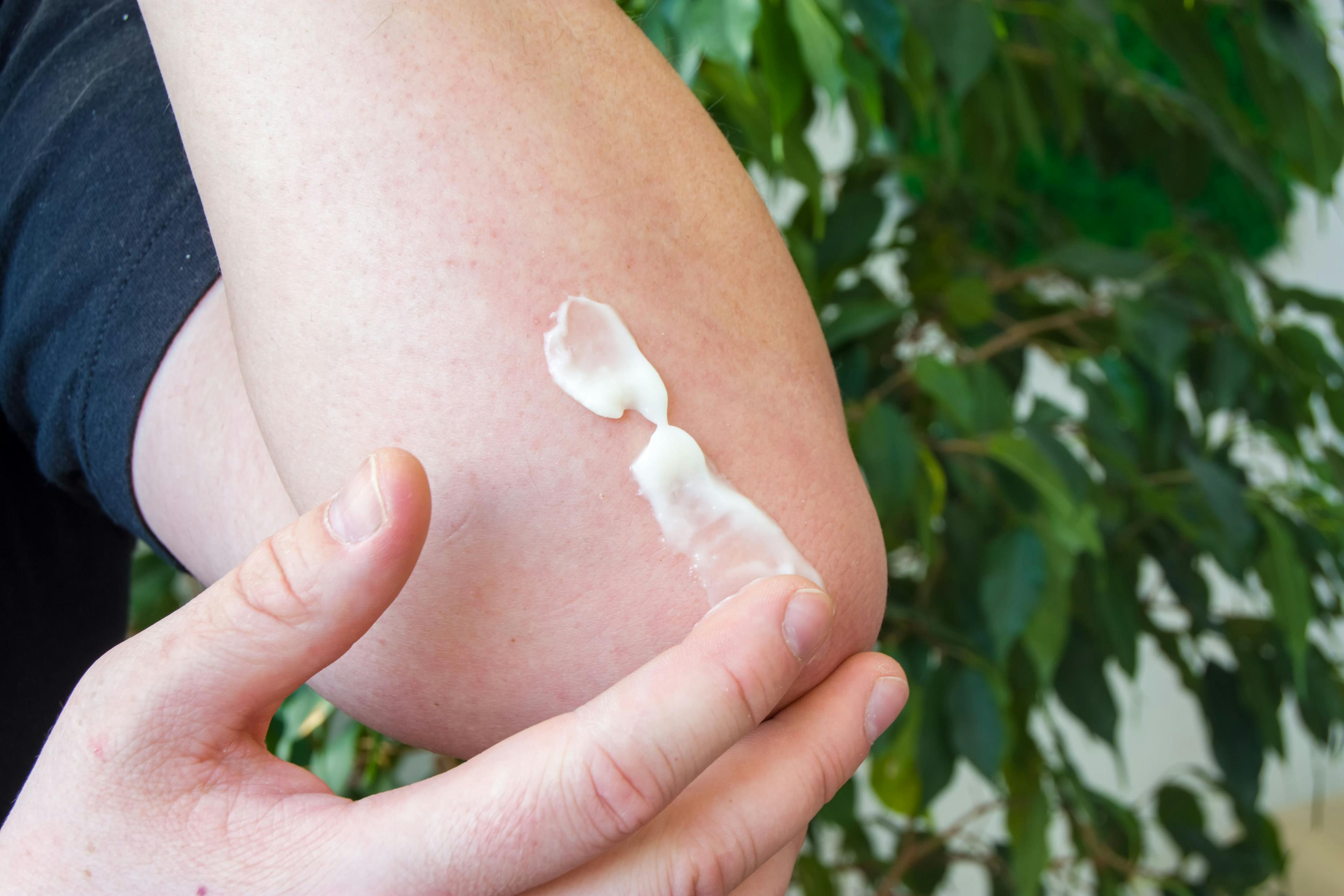- Acne
- Actinic Keratosis
- Aesthetics
- Alopecia
- Atopic Dermatitis
- Buy-and-Bill
- COVID-19
- Case-Based Roundtable
- Chronic Hand Eczema
- Chronic Spontaneous Urticaria
- Drug Watch
- Eczema
- General Dermatology
- Hidradenitis Suppurativa
- Melasma
- NP and PA
- Pediatric Dermatology
- Pigmentary Disorders
- Practice Management
- Precision Medicine and Biologics
- Prurigo Nodularis
- Psoriasis
- Psoriatic Arthritis
- Rare Disease
- Rosacea
- Skin Cancer
- Vitiligo
- Wound Care
Publication
Article
Dermatology Times
Next-Generation Therapies and Approaches Will Advance Acne Treatment
Author(s):
Topicals and oral antibiotics, as well as research on the skin microbiome, are paving the way for the future of acne treatment, according to a recent presentation at the 2020 ODAC Pre-Conference Inflammatory Diseases Symposium.
New topicals, narrow-spectrum antibiotics, and research on the skin microbiome are paving the way for the future of acne treatment, according to Jenna Lester, MD.
In a presentation at the Orlando Dermatology, Aesthetic & Surgical Conference (ODAC) Preconference Sneak Peek Inflammatory Diseases Symposium held virtually in December 2020, Lester provided an overview of promising treatments and therapies for patients with acne vulgaris. She is an assistant professor in the Department of Dermatology at University of California, San Francisco (UCSF), Health and founder and director of UCSF Skin of Color Clinic.
Trio of Topicals
The US Food and Drug Administration (FDA) approved trifarotene (Aklief, Galderma), a topical retinoid for treatment of facial and truncal acne, in May 2020.1 Retinoids such as trifarotene, which bind to the retinoic acid receptor (RAR), have 3 isoforms: RARα, RARβ, and RARγ. Trifarotene is unique; it is the only topical retinoid that selectively targets RARγ, the most common RAR found in the skin. The drug is also the first topical treatment studied and proven to treat both facial (forehead, cheeks, nose, and chin) and truncal (chest, shoulders, and back) acne, according a press release from Galderma.
In a 52-week open-label comparative study, 455 patients were given trifarotene. Data showed that the agent was well tolerated among participants. The most common adverse effects included pruritus, irritation, and sunburn, all of which occurred most frequently within the first 3 months of treatment. Results showed that at 52 weeks, more than half (57.9%) of patients achieved treatment success at 52 weeks. Quality of life also improved over that time frame, according to the data.
“When I’m counseling about acne topical treatments, I’m usually telling people how things will improve in 3-month cycles. By 6 months, if things aren’t better, I might decide to increase strengths of tretinoin or move some things around,” Lester said. “But for trifarotene, it seems that the efficacy is experienced at the highest percentages at about a year. So, for patients who may not tolerate waiting that long, this may not be the best medication.…However, the trickle effects of it really can’t be ignored.”
In August 2020, clascoterone cream (Winlevi; Cassiopea), received FDA approval for the treatment of acne in patients 12 years and older.1 Clascoterone is an androgen receptor antagonist that specifically competes against androgens such as dihydrotestosterone by binding to the androgen receptors located in hair follicles and sebaceous glands. This mechanism of action helps decrease production of sebum and inhibits activation of inflammatory pathways and proinflammatory cytokine synthesis.
In 2 randomized, vehicle-controlled, double-blind studies investigating clascoterone cream in 1440 males and nonpregnant females (all White), results showed a reduction in inflammatory and noninflammatory lesions. Overall, this topical was well tolerated, according to Lester.
Minocycline (Amzeeq; Vyne Therapeutics) was approved by the FDA in October 2019 for the treatment of nonnodular inflammatory moderate-to-severe acne in patients 9 years and older.1 A 4% minocycline foam falls under the tetracycline class of antibiotics, Lester said.
Results of a randomized, double-blind, vehicle-controlled study investigating 4% minocycline foam in 1488 patients showed an improvement in inflammatory lesions and revealed that 30.8% of patients achieved treatment success (Investigator Global Assessment of 0 or 1 and an improvement of 2 grades by week 12).
Lester adds that, compared with trifarotene, topical minocycline demonstrates a faster efficacy profile. “One of the reasons that this was an ideal medication to convert into a topical treatment is [that] because of the tetracyclines, minocycline has the least resistance and the most favorable [adverse] effects profile when comparing [with] doxycycline or tetracycline,” she said. “However, we know that there is potential for significant [adverse] effects, particularly discoloration and acne scarring, when taken systemically. With the increase in resistance to topical clindamycin and erythromycin, our setting is really prime for incorporating another topical antibiotic medication into our acne regimen.”
Notable Narrow-Spectrum Antibiotics
Lester also recommends the use of oral antibiotics such as sarecycline (Seysara; Almirall), a novel narrow-spectrum tetracycline class antibiotic approved by the FDA in 2018 to treat acne in patients 9 years and older.1
The drug possesses a stable C-7 moiety and works by targeting Cutibacterium acnes (C acnes)while having little activity against gram-negative organisms and intestinal microflora, Lester said. Protecting the microflora decreases short-chain fatty acids, which can be anti-inflammatory. It also prevents gastrointestinal distress, which, when disrupted, could make patients less likely to stay on the medication, she added.
In a clinical study, results showed that sarecycline performed well for facial, back, and chest acne, according to Lester. “We all are trying in dermatology to be better antibiotic stewards. If you’re not already recommending [sarecycline] for your patients, this is an excellent option,” she said. “It is a very narrow-spectrum tetracycline, and narrow-spectrum medications are what we’re aiming for in terms of being good antibiotic stewards in guarding against resistant bacteria.”
The Microbiome Connection
Lester reemphasizes the importance of protecting the skin and gut microbiome, which is made up of more than 1000 commensal species that occupy spaces that pathogenic bacteria otherwise would occupy.
She adds that certain phylotypes of C acnes are associated with acne, whereas others are associated with healthy skin. Some phylotypes also attack unhealthy types of the acne. In addition, gut organisms can influence glycemic control, tissue lipid content, and inflammation, which can have a direct impact on skin disease.
Few clinical trials look at topical probiotics for prevention and treatment of skin conditions except in atopic dermatitis, according to Lester. The results of one study found that consuming Lactobacillus acidophilus, Lactobacillus delbrueckii bulgaricus, and Bifidobacterium bifidum was just as effective as taking minocycline, whereas other study findings showed a decrease in inflammatory lesions.
Despite the promise of these findings, Lester said, more research must be done on the skin and gut microbiome and how they influence inflammatory skin diseases such as acne.
Disclosures: Lester reports no relevant disclosures.
Reference
1. Lester J. Acne: changing practices in a changing clinical landscape. Presented at: Orlando Dermatology Aesthetic and Clinical 2021 Preconference Sneak Peek Inflammatory Diseases Symposium; December 3, 2020; virtual.

Newsletter
Like what you’re reading? Subscribe to Dermatology Times for weekly updates on therapies, innovations, and real-world practice tips.


























